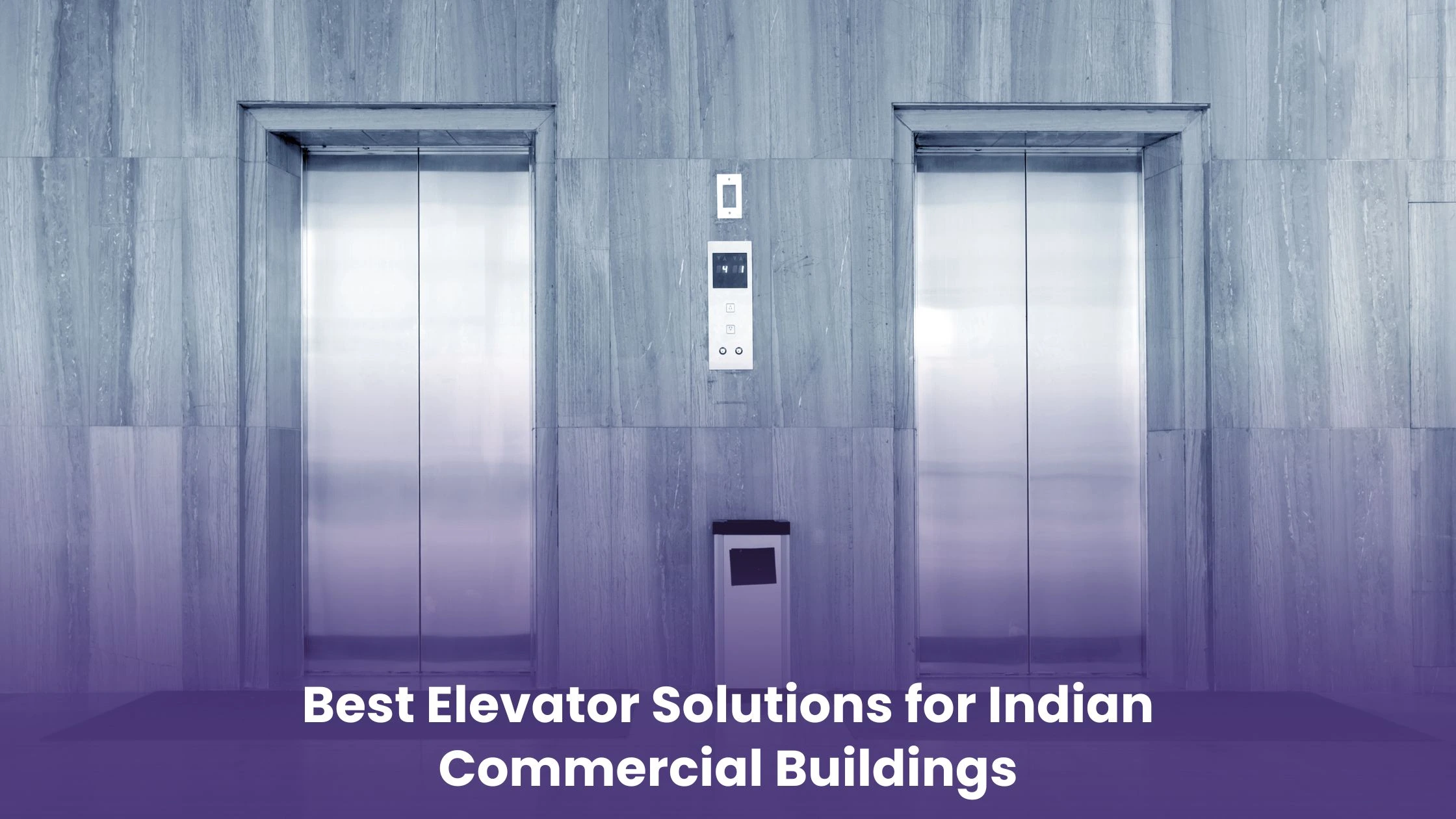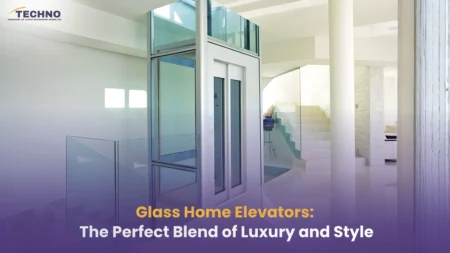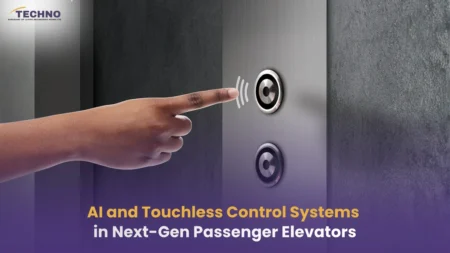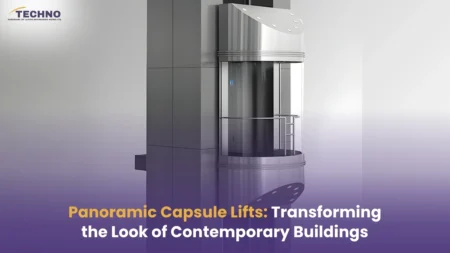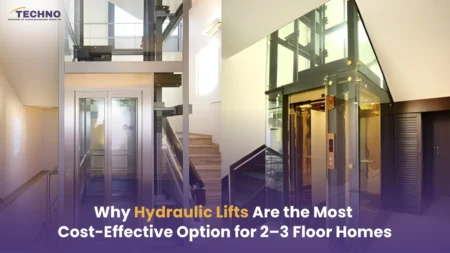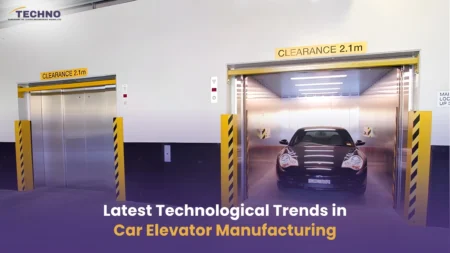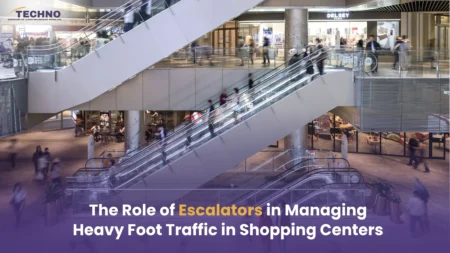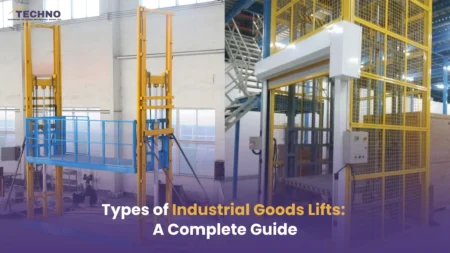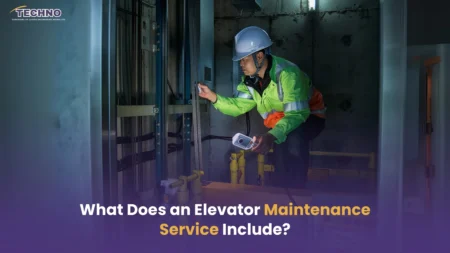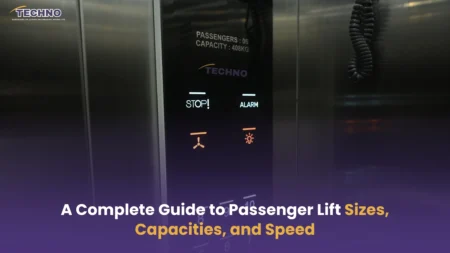Commercial buildings such as airports, hospitals, malls, and IT parks in India’s rapidly urbanizing economy are evolving quickly. With this evolution, elevators are being treated as more than an afterthought – they are fundamentally changing how buildings function, how people engage space, and how efficiently that space is used.
Selecting the Best elevator solutions India has to offer is multi-faceted and goes beyond choosing a brand and a cabin finish. It includes an understanding of building demands, adherence to safety codes, future readiness, energy responsibility, and architectural guidance. We will break it all down into categories for you in this article.
Usually, a failure does not happen overnight. There are usually subtle signs that you and other operators will notice.
Sometimes people are not aware of what the early signs are and what they mean. So, what should be alerted to?
Let’s decode the common signs that your goods lift requires urgent servicing, and what indicators you can identify before serious failures occur.
1. Elevator Types Intended for Indian Commercial Buildings
Every type of building requires a specific elevator system for its traffic, layout, and function. The following:
Passenger Elevators:
Most commercial elevators India buildings rely on passenger elevators. These elevators move passengers between floors in a variety of packages. The capacity ranges from 6 to 26, with speeds between 1 to 3 m/s. In places like malls, airports, and office towers where speed, security, and aesthetics are crucial, passenger elevators are installed.
Service Elevators:
Service elevators are the workhorses of a building for staff movement and function. These elevators have a robust interior and are built to take abuse. They carry carts, operational equipment, and maintenance crews up and down through a building. Hospitals, hotels, and/or large corporate buildings need service elevators, where passengers are not considered in the intended design.
Goods Elevators:
Goods lifts have a purely functional objective as they carry heavy materials or inventory. The design is based primarily on load capacity, shock resistance, and uses a commercial-grade safety device. Goods elevators are critical for missions in the warehouse or logistics space.
Capsule Elevators:
Capsule elevators are aesthetic elements in high-end commercial design. Typically found on glass facades or in atria, capsule elevators offer some luxury and can frequently be found in high-end malls, hotels, or convention centers.
Choosing the right type or combination of elevators for Indian buildings depends on traffic volume and specific functionality requirements.
2. Important Considerations for Commercial Elevator Evaluation
A good commercial elevator is capable of more than just moving people up and down. It can increase comfort, safety, and efficiency.
Door Operation Speed:
Fast and accurate door operation, especially in a busy building, can be a huge time saver and will improve traffic flow. Advanced controller systems allow for accurate opening and closing without jamming or obstruction.
Microprocessor-Based Controllers:
Microprocessor-based controllers can monitor elevator traffic for all elevators in a group and provide intelligent routing of elevators. The elevator can prioritize calls, which is vital in a busy commercial building during peak hours.
emergency auto-rescue device (ARD):
Power cuts are not uncommon in many cities throughout India. An auto-rescue device ensures that elevators stop at the nearest floor, open doors, and exit passengers safely, removing panic or entrapment situations proactively.
Touchless Control Panels:
With hygiene being of utmost concern since COVID, many commercial buildings are getting touch-free access using proximity or app-based panels.
Noise and Vibration Reduction:
Silence matters in premium workspace or hospital environments. Quality elevator systems offer the benefits of counterweights, motor dampers, and rail lubricators to give you peace and quiet.
Partnering with the Best Elevator Company in India ensures that these systems function seamlessly and reliably.
3. Compliance and Safety Standards for Elevators in India
In India, elevators must follow the relevant guidelines from the Bureau of Indian Standards (BIS) or a relevant local authority.
- IS 14665: Safety Codes for design, installation, and maintenance of elevators. If these rules are not followed, there could be a significant liability.
- IS 15259: Accessibility is a critical consideration for public buildings, for example, Hospitals and transportation terminals.
- Fire and Electric Safety Features: Flame-retardant wiring, smoke sensors, or fireman switches are extremely important, particularly in multi-tenant buildings.
The legal requirement for safety infrastructure is compliance with Automatic Rescue Devices, Brake Overspeed Governors, and Buffer systems.
Popular elevator companies in India offer safety audits and regulatory assistance, helping maintain standards and ensuring liability protection.
4. Commercial Elevator Technology Trends
Technology has allowed elevators to develop from mechanical to intelligent automation:
IoT Predictive Maintenance:
With sensor technology, you have the ability to monitor the performance, usage, and wear characteristics in real-time. Meaning problems can be identified before they become breakdowns. Potentially resulting in lower downtime and increased safety.
AI-based Traffic Flow Algorithms:
Elevators become aware of behaviours in passengers over time, the peak morning rush, lunch breaks, etc., and begin optimizing movements, optimizing what those behaviours mean to the elevators and how they respond.
Destination Dispatch Systems (DDS):
Instead of pressing a button to indicate the floor that you would like to go to inside the carriage, you preselect your destination. DDS uses that input to group passengers by destination, reducing stops, resulting in efficiencies.
Energy Regeneration Systems:
Elevators are able to send unused kinetic energy back to the building’s electrical grid, attributed to a building’s sustainability metrics.
These features define modern elevators India is adopting in its next-gen commercial spaces. These technologies are becoming standard for any elevator technology for commercial buildings India as businesses demand higher operational efficiency.
5. Elevator Design Aspects for Indian Commercial Building Design
Different types of commercial space layouts are common in India, leading to the necessity of customizing designs.
Deriving Space-Constrained or Compact Shaft Buildings:
Retrofitting old buildings or spaces with limited space often requires designing elevators for non-standard shafts.
Wind Load and Lateral Loads in a Seismic Area:
For most of our major cities, for example, Chennai or Ahmedabad, we would need to construct a structural element with anchoring systems for the elevators.
Aesthetic Integration:
While considering shaft elements, architects and builders often want the elevators to fit the building form, such as a clear glass capsule elevator, or to be a totally minimalistic steel cabin that fits into the building’s identity.
Customized design from the start ensures your Indian commercial building elevators are compliant, efficient, and seamlessly integrated.
6. Cost Estimates and Plan for Installing Elevators
Many builders do not understand that the process of cost estimating for elevator installation can be a daunting task. The overall cost can vary for several reasons:
- Base Equipment Cost: The type, capacity, and technology, as is the case with simple passenger elevators vs. advanced high-speed capsule lifts with DDS.
- Civil Work & Shaft Construction: This encompasses pit excavation, overhead adjustments, structure support, and costs; more times than not, this can make up 15-20% of your overall costs.
- Installation Costs: Will include laborers, scaffolding, tools, and testing.
- Optional Items: IoT sensors, fire-rated doors, and/or upper-end interiors if applicable to your building or project; can increase costs.
- Annual Maintenance Contracts: All elevators need maintenance, so be sure to factor in long-term commitment and pricing, given life cycle needs.
The Best Elevator Company in India offers transparent costing and helps optimize investment without compromising quality.
7. Options for Elevator Products that are Energy-Efficient and Eco-Friendly
Green buildings are no longer a niche; they are the new necessity. Elevators can help achieve substantial energy savings.
- Gearless Traction Machines: Use less energy and last longer than geared versions.
- LED Cabin Lighting with Motion Detection: Automatically recalls dimming or powering off an overhead light fixture at idle, conserving precious electricity and power.
- Regenerative Drives: Instead of using energy we power, they return the wasted energy back into the building’s utility supply during the braking function.
Commercial lift solutions India require sustainability benchmarks like IGBC and LEED. Environment-conscious systems are no longer a luxury, they are essential.
8. Elevator Capacity Planning for Busy Commercial Spaces
Building efficiency isn’t just about having fast lifts; it’s about planning for enough lifts of the correct type.
Kiosks & Office Buildings:
There is a general rule of thumb that guides lift volume decisions: 1 elevator per 50,000 sq. ft. of floor space. The demand for elevators varies by the number of floors and lift usage patterns at peak intervals.
Hospitals:
Hospitals require multiple lifts for specialized use, emergency lifts for inpatients, service lifts for moving equipment and supplies, and separate lifts for visitors.
Large Malls & Airports:
With Retail permanent kiosks operating and eating areas such as food courts, you must consider lifts with high volume capacity and dedicated service lifts placed every few units to restock stores and provide direction for moving goods on trolleys.
Smart elevator systems for businesses India can mitigate peak-hour overloads and improve space flow across commercial floors.
9. Intelligent Elevators for the Modern Indian Office
Elevators are keeping up with the increasing sophistication of workplaces.
- Workplace apps: Employees can use their phones to request lifts, which eases traffic at the elevator control panels so that people can enter the building.
- Facial recognition and biometrics: To secure access, limit floors, and properly gather usage data.
- Voice Activation: Encourages a clean, cutting-edge user experience.
Forward-thinking developers rely on the top elevator manufacturer in India to embed these systems in modern commercial projects.
10. Installation Process Challenges in Indian Commercial Settings
Elevator installation in Indian commercial properties is a tricky subject:
- Unpredictable Infrastructure: It is a design limitation confronting varying shaft sizes, duct placement, or existing utility lines.
- Logistical Delays: Transporting the bulky elevator parts through urban jams or rural terrains requires proper care in coordination.
- Power Issues: In Tier 2 and Tier 3 cities, a lot of voltage fluctuation demands voltage stabilizers and power back-ups.
Experienced Indian commercial lift services providers pre-plan for these issues and coordinate seamlessly during the setup phase.
11. Best practices in elevating work for offices.
In terms of maintaining the elevator, life, and safety of the person depend on the level of keeping done.
- Routine inspections: mechanical aspects every 30 days and lubrication, etc., for weariness.
- Quarterly emergency testing: ARD, alarms, and backup systems.
- Real-time monitoring: IoT maintenance systems alert the service team ahead of any breakdowns.
- Annual recertification: The regulatory body conducts an audit once every year, and they may impose a fine if one is found lacking.
Regular upkeep from the Best Elevator Company in India ensures a lifetime of smooth and secure performance.
Final Thoughts:
If we look around today in India, elevators are no longer considered nice-to-haves. Essentially, they form an integral part of how commercial spaces operate, interact with their users, and stay future-ready. From elevator installation India projects in malls and airports to smart systems in new IT parks, the right lift solution transforms a structure into a functional, dynamic space.
Whichever company you choose for your lift installation in India, it should be based not only on price but also on expertise coupled with after-sales service and long-term dependability.
Hence, whether you’re installing Indian commercial building elevators in a high-rise tower or retrofitting an old property, choose a Best Elevator Company in India that delivers not just a lift, but a lifetime commitment to safety, innovation, and growth.

